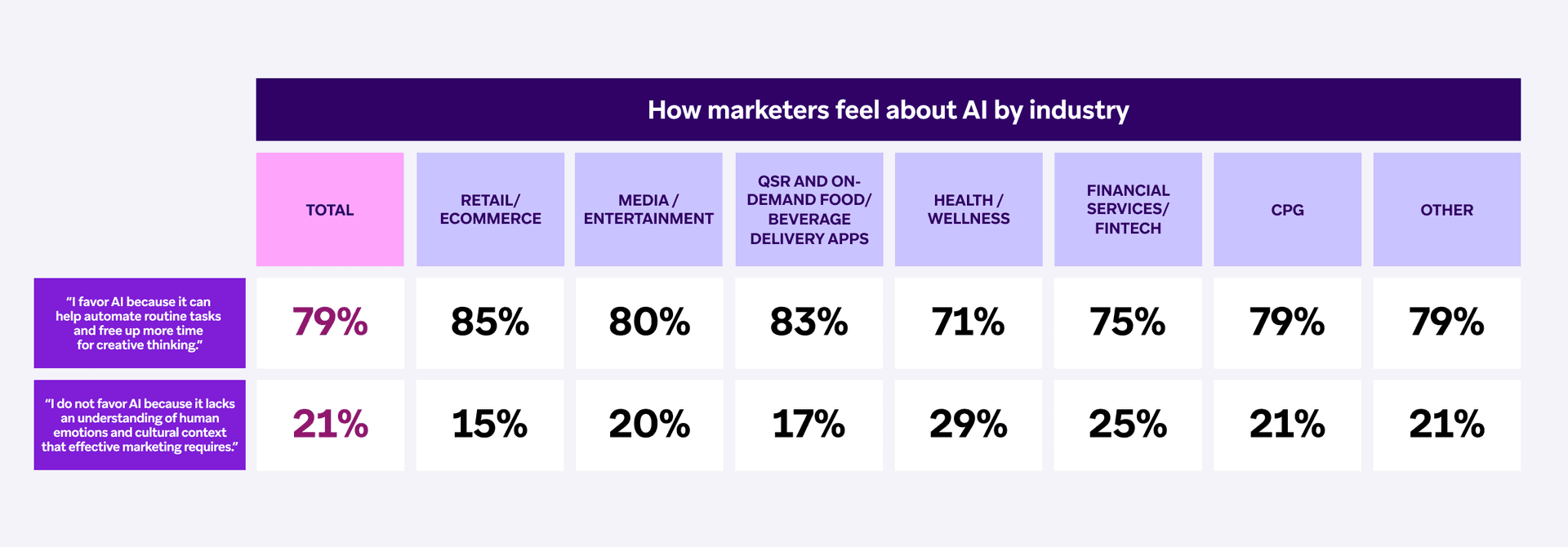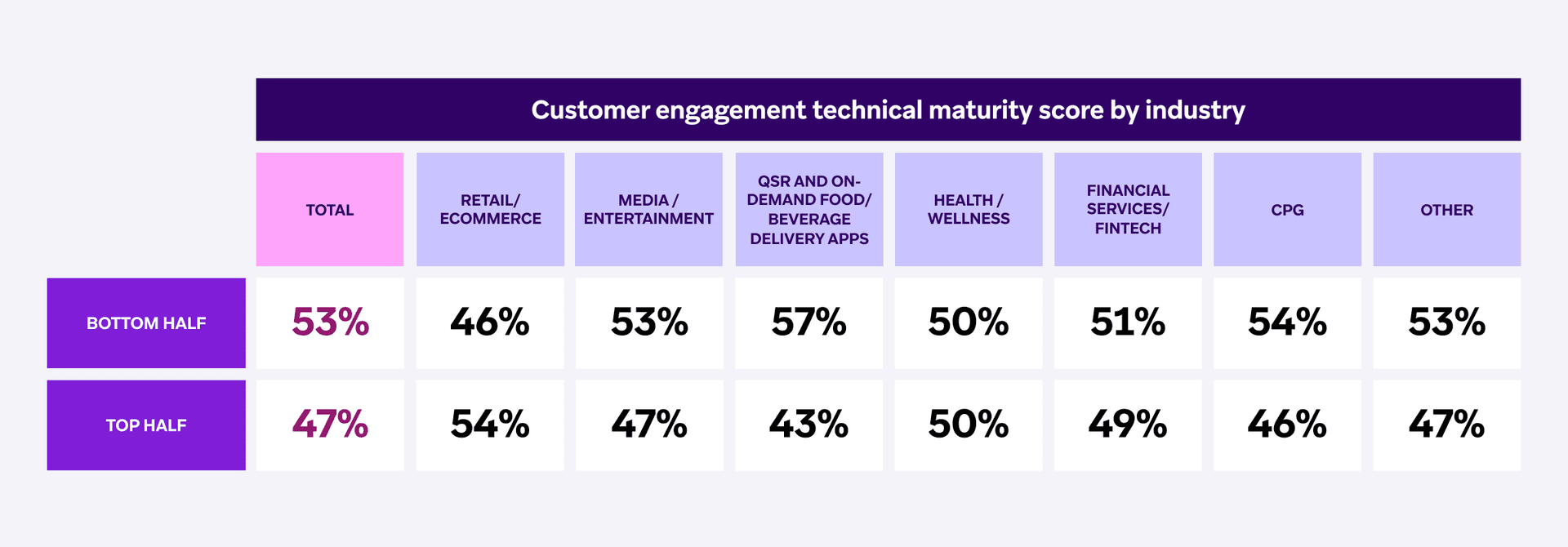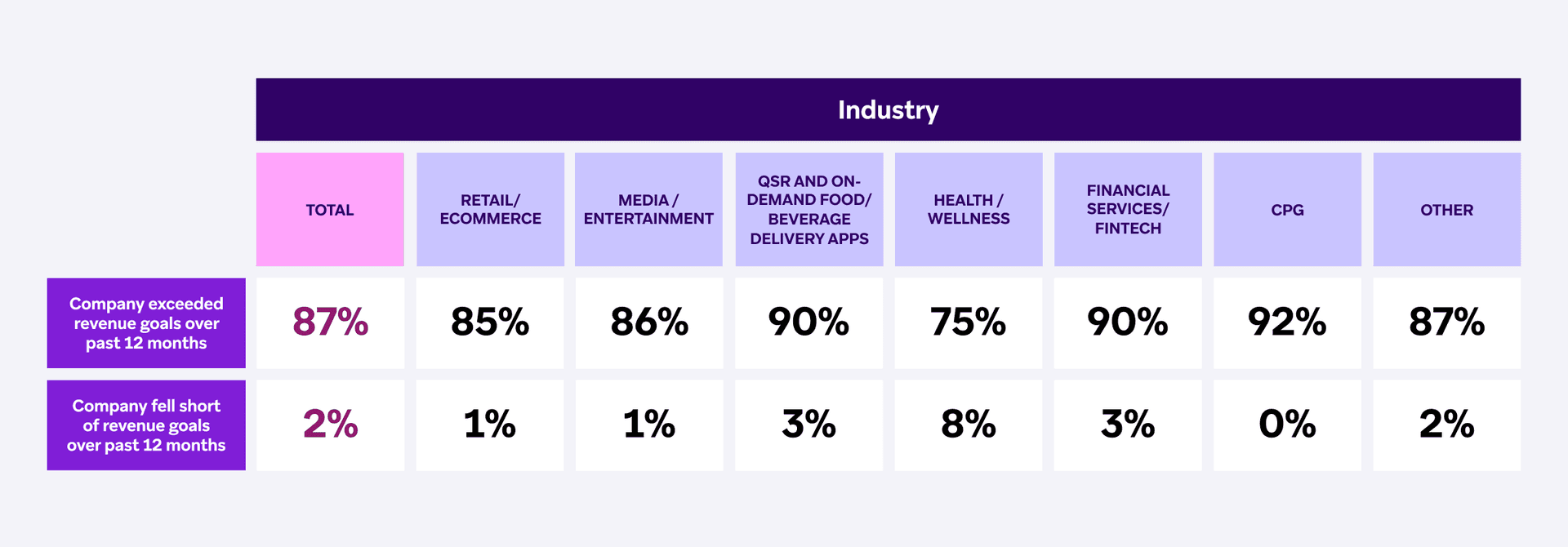2024 Health and Wellness Marketing Trends to Watch
Published on September 02, 2024/Last edited on September 02, 2024/6 min read


Team Braze
BrazeIt’s been a year of challenge and change for health and wellness brands. Compared to other industries, they’ve been the least likely to exceed their financial targets, among the least optimistic about future marketing budgets, and the least certain about using AI for marketing purposes. At the same time, however, marketers in this vertical have proven to be among the most technically advanced. And those that use these capabilities to their advantage can drive increased engagement and retention.
These are just a few of the top 2024 health and wellness marketing trends we’ve identified while conducting our analysis for this year’s fourth-annual Global Customer Engagement Review (CER), a comprehensive look at marketing and customer engagement across industries and the world.
Let’s dive into our findings and what they mean for the health and wellness industry.
The Top 3 Key Takeaways for Health and Wellness Marketers
1. Brands in this vertical are having the hardest time hitting their revenue goals, and, perhaps unsurprisingly, they’re among the least optimistic about their marketing budgets for the next year.
More than any other sector, health and wellness organizations were the least likely to exceed their revenue goals in 2023 and the most likely to fall short of these goals over the past 12 months.

It only makes sense then that they’re also among the least likely to expect their budgets to increase over the next year and among the most likely to expect a budget decrease over the next year.

In order to meet revenue goals without higher budgets, brands should consider consolidating their marketing efforts into a single, unified solution. Currently, 35% of brands use multiple channel-specific solutions, which can lead to redundant messaging and inefficient use of resources.
By adopting a single platform that optimizes messaging frequency and send times across all channels, budget-conscious marketers can significantly reduce costs. Additionally, only 50% of health and wellness companies are running multiple tests simultaneously and continuously experimenting by design. Focusing on the efficiency of testing can further enhance marketing effectiveness and drive better results, making it a crucial area for budget-constrained brands to prioritize.
2. While AI is viewed fairly favorably across all other verticals, health and wellness brands are the least likely to have positive feelings about artificial intelligence.
Given the sensitive nature of engaging with patients and marketing wellness services to consumers, it’s logical that health and wellness brands are approaching AI with more caution than marketers in other industries, citing concerns over the technology’s lack of understanding of human emotions and cultural context.

Likely as a result of these views, compared to brands in other sectors, health and wellness teams are less likely to report using (or planning to use) AI for creative ideation and personalizing campaign messaging. That said, more than half of surveyed health and wellness marketers (51%) are using or plan to use AI for things that can be more easily automated with fewer concerns, such as taking care of repetitive tasks.
By automating certain aspects of customer engagement, health and wellness brands can enhance efficiency, improve customer satisfaction, and free up human resources to focus on more strategic initiatives. To learn more, check out AI capabilities by Braze.
3. Leveraging the right marketing channels can help health and wellness teams drive user engagement and retention.
Our analysis of Braze data finds that health and wellness marketers who use out-of-product channels like mobile push notifications see massive growth in retention.

Cross-channel campaigns that leverage multiple in-product and out-of-product channels are also highly effective for engaging and retaining health and wellness customers.
Areas Where Health and Wellness Brands Excel—and Areas for Improvement
In 2021, we introduced The Braze Customer Engagement Index, offering brands across the globe a shared framework for measuring customer engagement. The Index includes a ranking system with three levels of maturity.
- Activate brands are those just getting started in customer engagement.
- Accelerate companies are notable for collaborating, experimenting, and employing data-driven strategies.
- Ace organizations are at the top of their field for utilizing streaming data to power full-fledged lifecycle-driven customer engagement approaches.
Areas Where Health and Wellness Brands Excel
Health and wellness brands are ranked among the top performers across industries with respect to technical maturity.

Marketers in this sector have demonstrated a strong commitment to technological advancement by earning the highest scores for their customer engagement execution and personalization practices. They’re among the most likely to use real-time engagement insights, such as customer browsing behavior, clicks, and views, to tailor customer experiences and campaigns. They’re also the most likely to orchestrate campaigns across channels and customer lifecycle stages through one single customer engagement platform.
Opportunities for Improvement for Health and Wellness Brands

In order to meet revenue goals with tighter budgets, health and wellness marketers can increase efficiencies and drive growth by rethinking how they approach building their strategies, planning their campaigns, and leveraging AI.
From a team's perspective, the industry reports the lowest frequency of customer engagement syncs to develop a cohesive strategy. To advance even further, these brands should commit to meeting more often within their organizations. Surveyed health and wellness marketers also score the lowest when it comes to combining multiple data sources for future campaign planning, which could limit their ability to leverage data-driven insights to iterate on their strategies. When it comes to the use of AI, brands in the industry consistently rank low in usage or planned usage.
Final Thoughts
While they remain at the forefront of digital adoption, health and wellness brands must collaborate further with their own teams and do a better job of bringing together data across sources to inform campaign planning to achieve greater revenue gains.
About the Study
These findings are part of our broader fourth-annual Global Customer Engagement Review, which draws on the following sources:
- Market research featuring 1,900 VP+ marketing decision-makers across 14 countries in three global regions.
- An analysis of Braze proprietary data, including 9 billion global users and nearly1,000+ Braze Customers in 50+ countries, via our leading customer engagement platform.
- In-depth interviews with marketing leaders from best-in-class brands in five industries across three regions.
Find Out Even More 2024 Marketing Trends
Learn about the worldwide state of customer engagement in the 2024 Global Customer Engagement Review, which reveals three global marketing trends as well as important customer engagement developments by industry.
Related Tags
Be Absolutely Engaging.™
Sign up for regular updates from Braze.
Related Content
View the Blog
How behavioral marketing turns data into personalized experiences

Team Braze

Enterprise generative AI: Transforming data, decisions, and customer experiences

Team Braze

Omnichannel personalization: Delivering consistent, connected customer experiences
